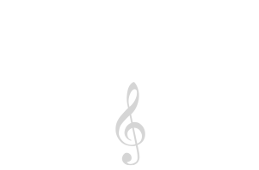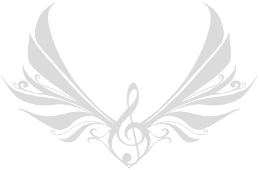Description:
In the 144 Notes and 144 Notes web application, acoustic and electric violins are the same. The lowest note that can be played on the violin with standard tuning is 3G. The highest note that can be played is not so well defined, because it depends on the length of the fingerboard and the skill of the violinist. By the skill we mean; expert violinists know how to use something called harmonics to achieve really high pitches. However, on most violins the highest note that can be played on fingerboard is somewhere between 7C and 8C. For example, let’s look at the violin at the top that goes to 7A:
The pitch range goes from 3G to 7A which means 51 different notes. Open strings are tuned to (from thickest to thinnest): 3G, 4D, 4A, 5E. So the violin is primary tuned in “perfect fifths”, that mean 7 different notes (pitches) before note repeat itself on other string. So on the violins many notes are repeated. The difference between repeated note(s) on different string(s) is only in timbre. For example; the note 4B repeats itself three times. All this three notes have the same pitch, but with different timbre.
Let’s observe the positions of some notes:
- Notes 3G, 3G♯, 3A, 3A♯, 3B, 4C and 4C♯ on the left side (the thickest string) appear only once, just like the notes 7D♯, 7E, 7F, 7F♯, 7G, 7G♯ and 7A on the right side (the thinnest string)
- The first repeated “bass” note is 4D and the last repeated note on the tweet side is 7D.
- The most repeated notes are 5E, 5F, 5F♯, 5G, 5G♯, 5A, 5A♯, 5B and 6C. Each of them can be played from four different locations.
Caution: circumstances can change when we change the tuning and/or we have the violin with shorter or longer fingerboard. I used 8 notes less when designing the 144 Notes application.
Location of the notes:
Most violins have no frets, so how to find exact location of the notes? The most easy and less precise way is of course to compare your violin with the one drawn above. If you’re at luck you’ve got perfect match :).
On a tuned violin you can find some notes quite easily. Like the 4D note on thickest string for example. You can do that by putting finger on thickest string on place, that is close to the drawn 4D note on the image above. Play it and observe the string near it. If the string near vibrates even if you don’t touch it (you can see it by naked eye), you’d found the location of the 4D note. If it doesn’t, try to slide finger little higher up the thickest string or little lower (while playing it). The string near is tuned to 4D note and starts to vibrate when anyone near plays the same note, even if it’s played on different instrument. The reason for that is called resonance frequency. By knowing the location of the 4D note, you also know that notes vertically up (on other three strings) should be 4A, 5E and 5B. And you get the approximate mismatch of your violin to the drawn one.
The easiest way to get location of all notes on your violin is to use application for smartphone called Audio Spectrum Monitor.
The other longer way is to use fret calculator. You’ll need to measure “Scale Length” of your violin. It doesn’t matter what unit you use (meter or inch). The notes are exactly at locations where the fret wires would be.
It’s good to mention that in the 144 Notes application we didn’t use 1:1 ratio, but same spacing for every note – by this the notes are more easily accessible and easier to read. And they also go nice along with the other instruments. This shouldn’t be a problem, you’ll get used to it quickly.
Which of repeated notes to choose?
Well, this is not an easy question. It depends on many things, especially on what would you like to achieve. Most people use notes that are physically closer together with the combination of open strings. Same note (pitch) played further from pegbox on thicker string gives timbre that contains more bass in it. So if you want a song (or just a note) to sound more “deep”, you play it there. If you want more neutral timbre you play it in the middle on the middle strings. And if you want more sharp timbre, you play it on thinner string closer to the pegbox. It’s up to you. 




